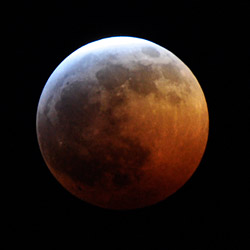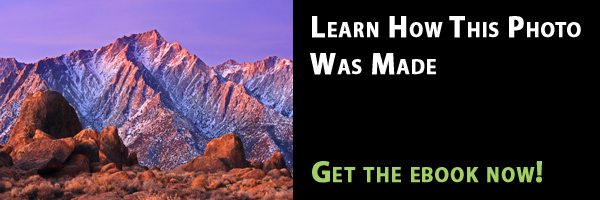
In a total eclipse, the Moon turns bright red (due to the way the light from the Sun is scattered as it passes through our atmosphere), and it’s truly a beautiful site. In fact, it was a lunar eclipse that originally inspired me to get a digital SLR 🙂
If you’re interested in photographing the eclipse, check out this great blog post by Michael Frye. He offers some good tips, especially about exposure.
I haven’t shot many photos of the Moon, but I would recommend paying close attention to your shutter speed. The Moon orbits the Earth pretty quickly, so you’ll want a fairly fast shutter speed (and, don’t be afraid to increase your ISO to get that faster shutter).
If you zoom in on your photos, and notice the Moon isn’t very sharp, it’s likely because:
- Your shutter isn’t fast enough (the Moon is moving across your image sensor and resulting in a blurry image).
- Your lens isn’t focused on the moon (try zooming in on live view to get precise focus).
- The Moon isn’t taking up enough space in your frame (usually a lens of 300mm or longer will make the Moon big enough to see some nice detail).
And, don’t worry, if you miss this lunar eclipse, there’s another total eclipse coming up in April of 2014, which will be visible from most of the US and much of South America 🙂
If you enjoyed this article, and would like to read more, please signup for free updates by email or RSS.
 About the Author: Steve Berardi is a naturalist, photographer, computer scientist, and founder of PhotoNaturalist. You can usually find him hiking in the beautiful mountains and deserts of Southern California.
About the Author: Steve Berardi is a naturalist, photographer, computer scientist, and founder of PhotoNaturalist. You can usually find him hiking in the beautiful mountains and deserts of Southern California.

wow lucky u guys, happy snapping…
Regarding focussing, would it not be acceptable to set your manual focus to infinity?
I often have good success with spot metering the moon in aperture priority. I keep an eye on the shutter speed though. The moon does move real fast.
The moon orbits the earth? Um…
Anyway, thanks for the aproximate time! Been trying to figure that out.